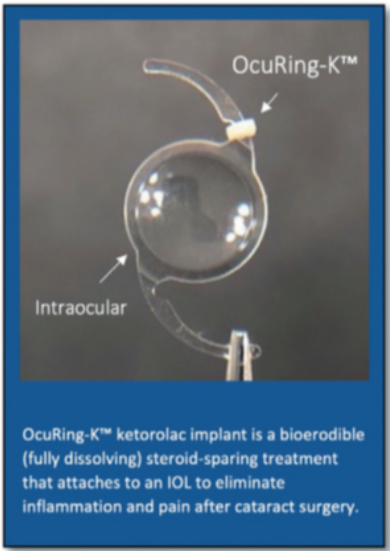Intraocular NSAID
New haptic-affixed bioerodible ring delivers NSAID intraocularly after cataract surgery. Roibeard Ó hÉineacháin reports.

Roibeard O’hEineachain
Published: Wednesday, June 30, 2021

New haptic-affixed bioerodible ring delivers NSAID intraocularly after cataract surgery. Roibeard Ó hÉineacháin reports.

Published: Wednesday, June 30, 2021
